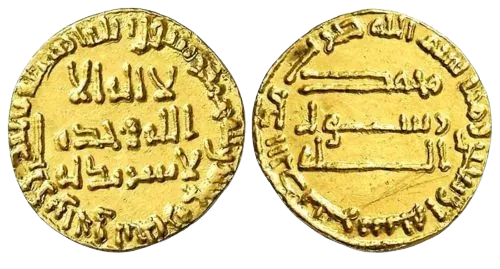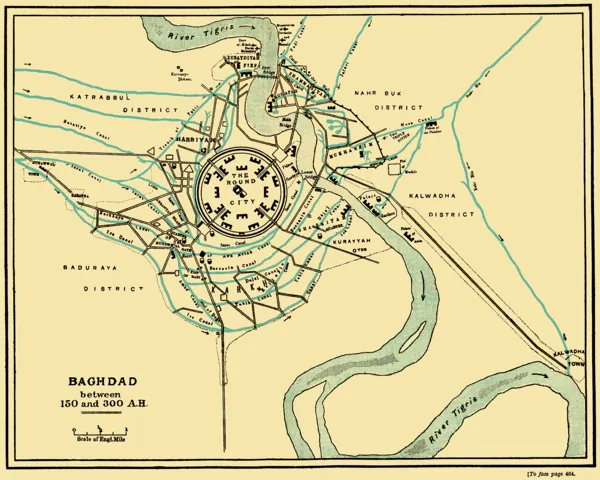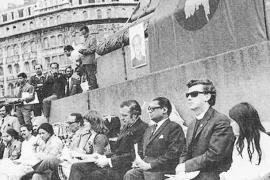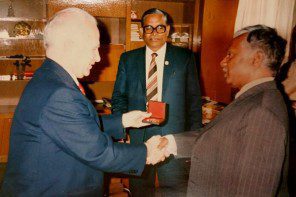Abbasid Caliph al-Mansur, whose full name was Abu Jafar Abdullah al-Mansur ibn Muhammad, played a pivotal role in establishing and solidifying the Abbasid caliphate. Born in Al-Humaymah, Syria (now Jordan) between 709 and 714, al-Mansur’s contributions to Islamic history are significant. This article explores the life and achievements of al-Mansur, focusing on key aspects of his reign and his impact on the Abbasid dynasty.
Early Life and Rise to Power
Al-Mansur was born into the Abbasid family, which had emigrated from the Hejaz region in 687-688. His father, Muhammad, was a descendant of Abbas, while his mother was a Berber slave. Before the fall of the Umayyad dynasty, the Umayyad caliph Marwan II arrested al-Mansur’s brother, Ibrahim, who was the head of the Abbasid family. Fleeing with his family to Kufah in Iraq, al-Mansur pledged allegiance to his brother Abu al-Abbas al-Saffah, who became the first Abbasid caliph.

Achievements of Caliph Al-Mansur
Consolidating the Abbasid Caliphate
Following his brother’s death after a five-year reign, al-Mansur took on the responsibility of establishing the Abbasid caliphate. He actively participated in eliminating the remnants of Umayyad resistance and secured the submission of governors. In Mesopotamia, al-Mansur informed a governor of the Umayyad caliph’s death, leading to the governor’s surrender. However, the governor and his followers were executed, solidifying al-Mansur’s authority.
Al-Mansur faced various challenges during his reign, particularly from ambitious army commanders who staged revolts. One notable revolt occurred in 754 when al-Mansur’s uncle, Abdallah bin Ali, claimed a stronger right to the caliphate. The assistance of Abu Muslim, a key figure in the revolt against the Umayyads, was instrumental in averting the danger posed by Abdallah’s revolt. Al-Mansur’s actions also involved removing potential rivals and dissociating the Abbasids from their more radical supporters.
Only a few months after the defeat of Abdallah, Al-Mansur executed Abu Muslim. The latter’s strong grip on the Khurasaniyya forces made him a formidable adversary. Abu Mulsim and his force were instrumental in the Abbasids’ successful campaign against the Umayyads. By eliminating Abu Muslim, Al-Mansur sought to neutralize a pivotal figure whose influence could have jeopardized the stability and power of the Caliphate.
A revolt in 755 led by Sunbadh, described as a follower of the Mazdakite heresy, demanded justice for Abu Muslim’s murder. Another group known as the Rawandiyyah, who believed in the transmigration of souls and considered al-Mansur a god, faced suppression by al-Mansur in 757-758. In 767, al-Mansur had to quell another revolt in Khorasan led by a leader claiming to be a prophet.
Construction of Baghdad
Caliph Al-Mansur’s most enduring achievement was the establishment of Baghdad as the capital of the Abbasid caliphate. In selecting his capital, Mansur sought something central with promising urban prospects. Earlier Islamic cities, such as Kufa and Basra, were situated on the periphery of the Arabian desert, reflecting a nomadic mindset of proximity and longing for hinterland (El-hibri: 49). Furthermore, Mansur desired to distance himself from the previous Umayyad base in Syria. Baghdad proved to be the ideal solution to his quest for a capital. Not only was it strategically positioned, but it also possessed a rich imperial history. Additionally, Baghdad benefited from the desert’s protective presence on Iraq’s southwestern flank, while the Zagros mountain range served as a barrier to the east.
Construction of the city began under his command in 762, partly in response to the restlessness of existing towns such as Basra and Kufah. It also symbolized the stability of Abbasid rule. Al-Mansur even considered utilizing materials from the ruins of Ctesiphon, the former capital of the Iranian dynasty, to construct Baghdad. The new capital also provided space for the growing bureaucracy, reflecting Iranian influences and ensuring a more stable foundation for Abbasid governance.

Caliph Al-Mansur’s Translation Patronage
Caliph Al-Mansur played a significant role in sponsoring the translation movement. He brought together scholars, translators, and intellectuals with diverse language skills. They translated a wide range of works from Greek, Persian, and other languages into Arabic. The texts encompassed various fields, including philosophy, mathematics, medicine, astronomy, and geography.
Al-Mansur established the famous Bayt al-Hikma, or House of Wisdom, in Baghdad. It was the center of intellectual and scientific activity. There the scholars collaborated, conducted research, and engaged in extensive translation work.
The major works translated during Al-Mansur’s reign include the Indian astronomical handbook Zij al-Sindhind, Ptolemy’s Almagest, and Euclid’s Elements. He paid al-Ḥajjāj ibn Yūsuf ibn Maṭar to translate Euclid’s Elements twice to ensure highest standard of the translation.
Al-Mansur’s sponsorship of the translation movement had far-reaching effects. The translated works became instrumental in shaping the Islamic Golden Age. It fostered advancements in various disciplines. The translation movement facilitated the assimilation and synthesis of diverse intellectual traditions.
Legacy and Character
Caliph Al-Mansur firmly established the Abbasid caliphate through his political and military strategies. Furthermore, he ensured a smooth succession by arranging for his son, al-Mahdi, to become the next caliph. This established a tradition in which future Abbasid caliphs could directly trace their lineage back to al-Mansur.
Described as a tall and lean man with a brown complexion and a sparse beard, al-Mansur possessed notable qualities that shaped his rule. Anecdotes depict his simplicity of life, frugality, love for poetry, and disdain for music. These traits gave him a distinct reputation among his contemporaries and added to the uniqueness of his character.
Death and Burial
Caliph Al-Mansur’s reign came to an end with his death on October 7, 775. While on his way to Mecca to perform the pilgrimage, he passed away near the holy city. His burial took place in close proximity to Mecca, marking his final resting place.
Summary
Al-Mansur, the second caliph of the Abbasid dynasty, played a vital role in establishing the Abbasid caliphate. From his early life to his achievements as a ruler, he faced numerous challenges, suppressed revolts, and ensured the stability and longevity of the dynasty. His most notable accomplishment was the construction of Baghdad, the capital that symbolized the permanence of Abbasid rule. Al-Mansur’s influence extended beyond his own reign, as his successor and subsequent caliphs traced their lineage back to him. Today, his legacy remains significant in the annals of Islamic history.
Reference
- El-Hibri, Tayeb, The Abbasid Caliphate, Cambridge University Press, 2021.







